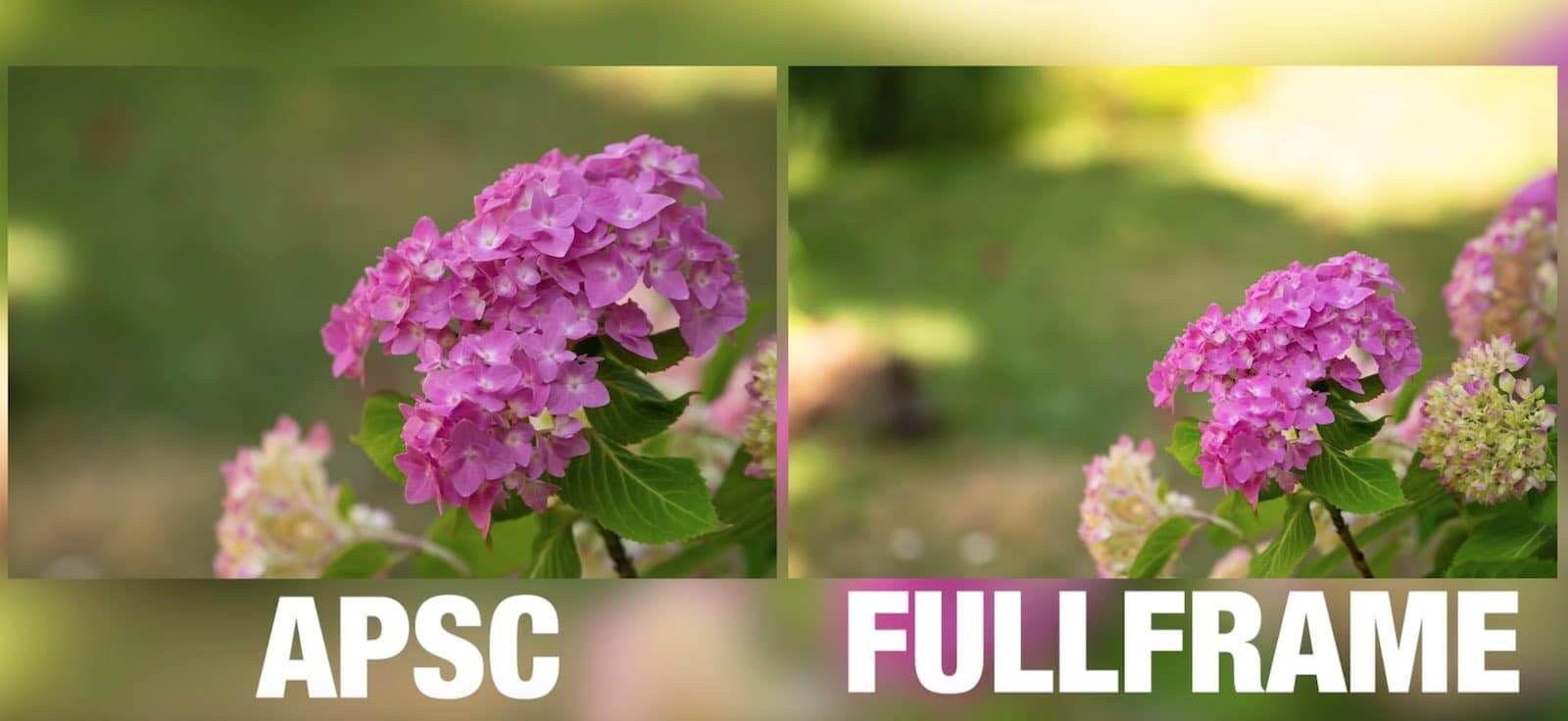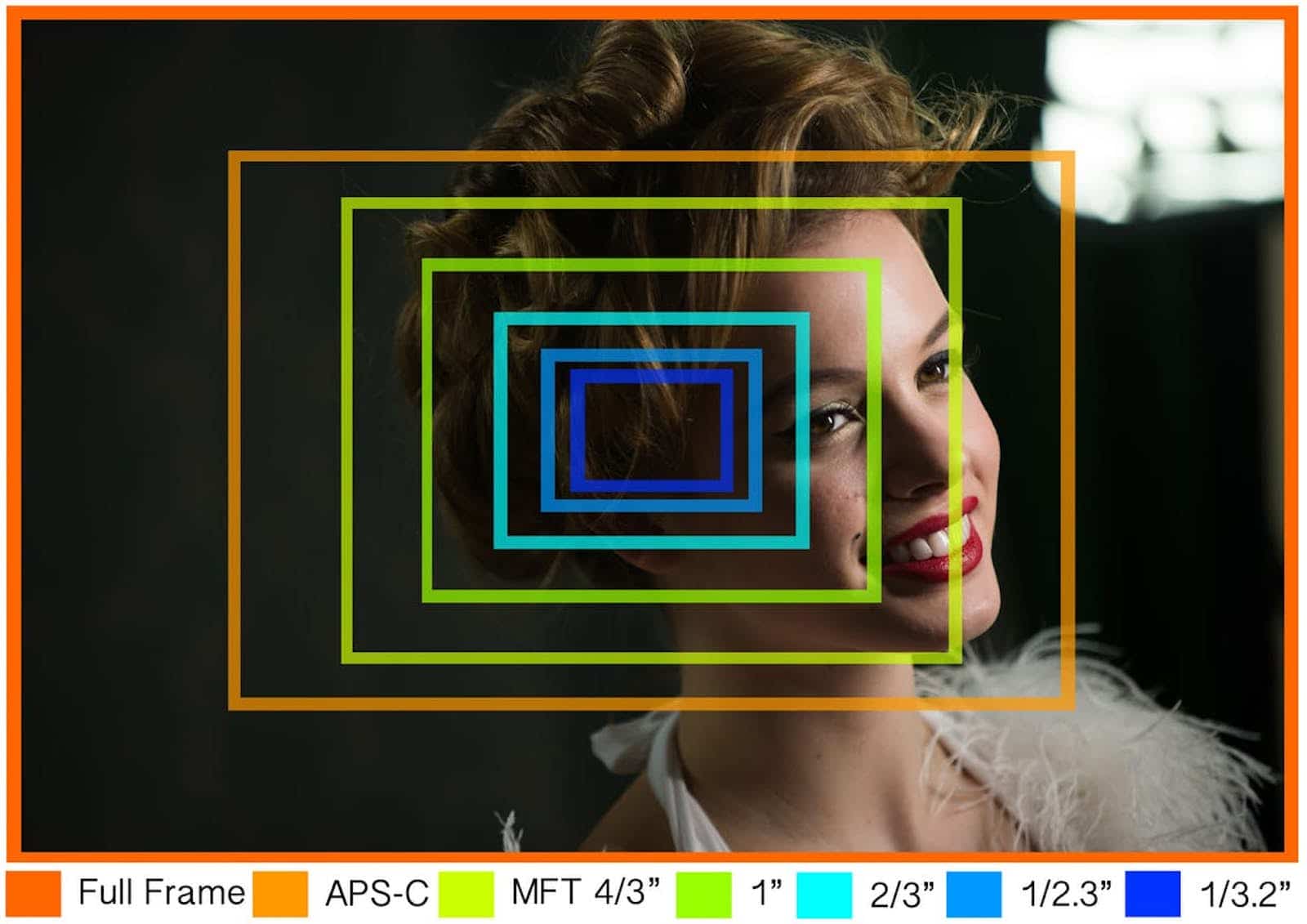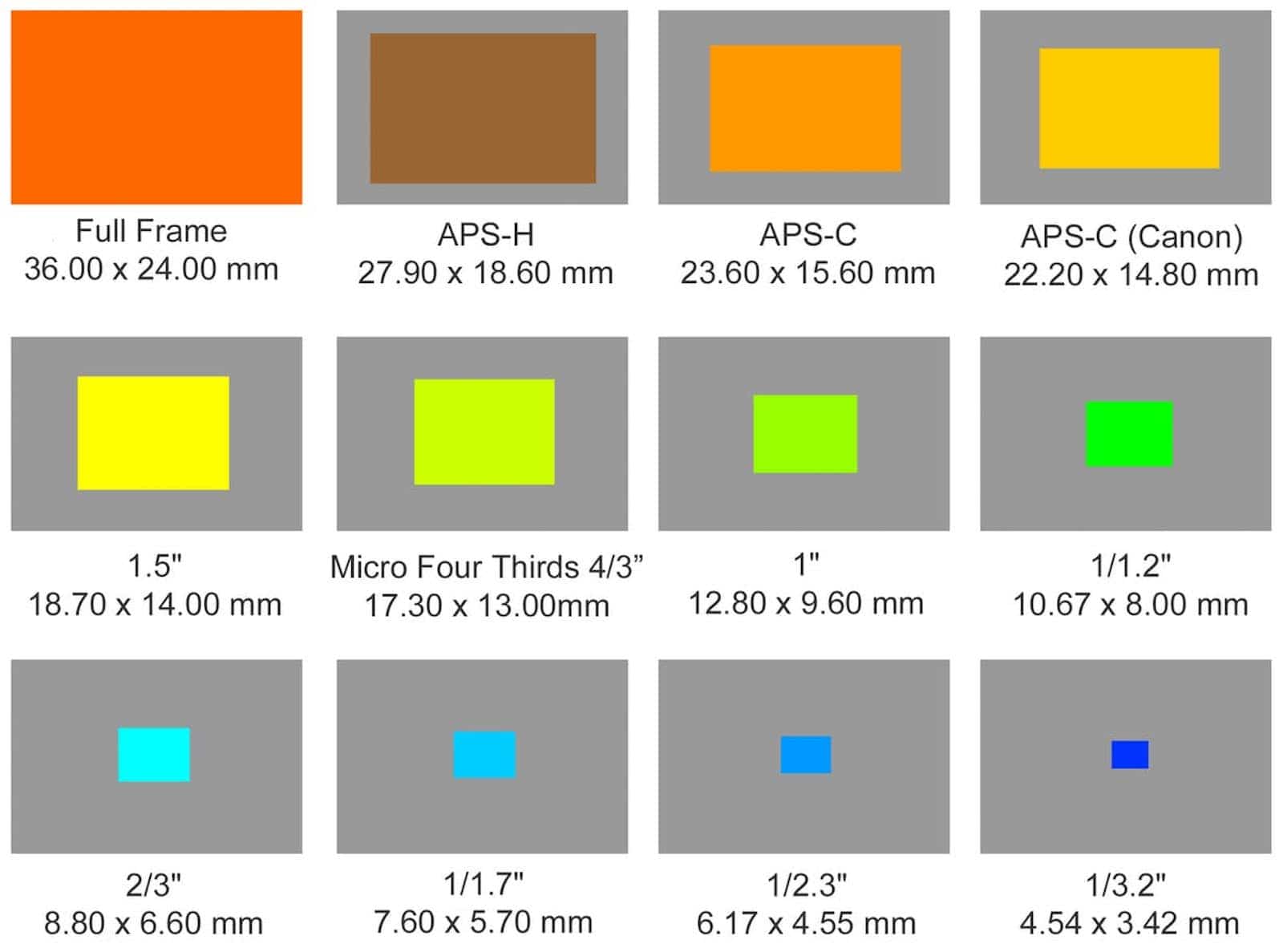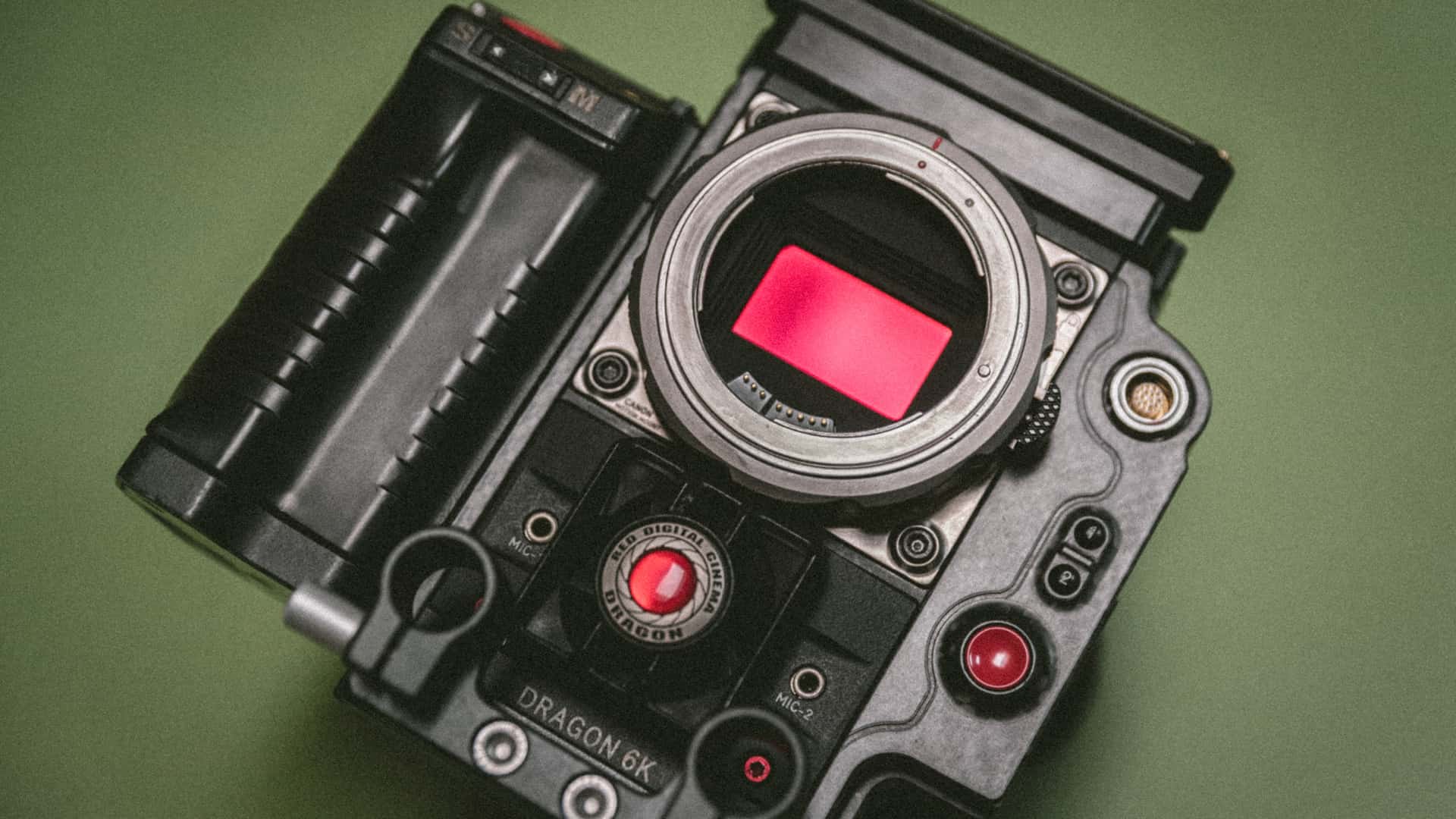Inside your digital camera is a very important element: the sensor. Camera sensor size is definitely something to consider when renting or purchasing a camera. The image quality and the flexibility of what kinds of images you can capture is directly related to your camera’s sensor. So how exactly does camera sensor size matter? Let’s take a closer look.
Camera Sensor Size
Does a camera’s sensor size matter?
Before we get into a camera sensor size comparison, and the difference between smaller vs larger sensor sizes, we need to answer a fundamental question: what is a camera sensor? We should know its main function before we determine anything else.
CAMERA SENSOR DEFINITION
What is a camera sensor?
A camera sensor is a piece of hardware inside the camera that captures light and converts it into signals which result in an image. Sensors consist of millions of photosites, or light-sensitive spots that record what is being seen through the lens. The size of the camera’s sensor determines how much of this light is used to create the image.
Because a sensor stores such valuable information, if there is a large camera sensor size, more information can fit, producing better quality images than smaller sensors. The size determines what you see through your camera’s viewfinder.
Smaller sensors apply cropping to lenses while larger sensors can capture much more of the scene. This full-frame from larger sensors is your traditional 35mm film. A camera sensor and its size determines image size, depth of field, resolution, low-light performance, a camera’s physical size, and more.
CAMERA SENSOR SIZE AFFECTS:
- Image quality and resolution
- Depth of field
- Angle of view
- Low-light performance
- Size of camera and lenses
Quick Overview on Photosites and Megapixels
While megapixels do matter to some degree, they’re not the end all be all of what creates a crystal clear image. The sensor size plays quite a role. Let’s quickly break it down.
Your camera sensor’s is basically a photo-sensitive site that captures light and color. This sensor has millions of these light-capturing cavities called "photosites." The camera transforms these photosites into pixels which make up your image.
A pixel is the smallest unit of a digital image that can be represented in a display device. A million pixels is the equivalent to one megapixel. So your megapixel count refers to how many of these photo-sensitive sites your sensor contains.
If you have a 24-megapixel camera, it means you have 24 million photosites on your sensor. So, where does a camera sensor size come into play? Keep in mind, a high megapixel doesn’t necessarily mean better image quality. Why?
Well, if you have a high megapixel count, on a small sensor, all that means is the photosites are now smaller. In good light, this works just fine. But if there is low light, the tiny photosites on a smaller sensor don’t work as well.
Hopefully, you understand the interplay of megapixels and sensor size, so now we can jump into how size affects the quality of each shot. Don't forget that to maximize the efficacy of your sensor, you'll need to know how to clean your camera sensor properly.
SENSOR SIZE COMPARISON
How does sensor size affect your shot?
Of course, bigger isn’t always better.
A larger sensor requires a larger lens to cast an image over it. Not to mention, your camera itself might have to be larger to house a large sensor. Both of these considerations can be cumbersome and just down right expensive, especially if you’re traveling or if your filmmaking style doesn’t demand it.
How else does a camera’s sensor size affect your images? This video gets into some of the nitty gritty science behind camera sensor size.
Camera sensor size explained
Low-Light Capabilities
As mentioned above, while megapixels measure the resolution of your image, a higher count doesn’t necessarily mean they take care of everything. A larger sensor allows larger photosites and an ability to capture low light situations compared to a smaller sensor.
Image Quality and Resolution
A camera’s resolution is measured in megapixels. The bigger the camera’s sensor, the bigger the photosites are to hold more megapixels, creating a clearer image.
Depth of Field
If you’re interested in a how to capture a shallow depth of field, or blurring the background to make your subject pop, a larger sensor is the way to go. Smaller sensors require more distance from the subject to execute this. Or, they’ll need a very wide angle lens.
Here's a video breakdown of how aperture works to achieve the range of depth of field.
What is Aperture? • Subscribe on YouTube
Below is an example of two sensors from the same distance that capture the blur very differently. Learn more about the different types of camera lenses and how they work.

Notice the quality of the background blur
Angle of View
Angle of view refers to how much of the frame we’ll be able to see once we take the picture. Smaller sensors have a crop factor. Take a look below. You’ll notice how the full frame (larger sensor) accommodates for much more of the image.

Sensor size crop factor
Now that we've covered the basic considerations between large and small camera sensor size, let's get into more specific detail, including technical specs.
SIZING THEM UP
A sensor size comparison
Considering sensor size is another way to assess the quality of your equipment. The next time you go camera shopping, remember that the sensor size is a major feature. Make sure you understand the different types of cameras and types of lenses and how those factors combine with your camera's sensor size.
Below is a brief guide to a few of the common camera sensor sizes. Also, Benjamin Jarwoskyj shows us the resulting images from some of these different sized sensors.
Hands-on sensor size comparison
Jarwoskyj reminds us that larger sensors are great for capturing more background around your subject. The downside is that larger sensors don't perform as well in low-light conditions. In other words, camera sensor size does matter but larger is not better in every circumstance.
Here’s a quick sensor size chart with technical specs. We'll get into how each of these works individually below.

Sensor size chart
Full Frame 36mm by 24mm
This is the largest sensor size. As mentioned above, it’s the same as a 35mm film frame. There is no crop factor, so whatever you see in the viewfinder is what you’ll shoot. Images of this size often require larger-bodied cameras, and even larger camera lenses.
If using wide aperture lenses, these sensors can capture very shallow depths of field, often great for videography.
APS-H 28.7 mm by 19mm
APS stands for active pixel sensor and it’s super popular for interchangeable lens cameras. It combines a large sensor with a moderate pixel count boosting ISO performance with a 1.3x crop factor.
APS-C 23.6mm by 15.8mm
Also extremely popular, especially amongst major brands. Not all APS-C sensors measure equally. A Canon APS-C sensor is about 22.2mm by 14.8mm while the Sony is about 23.5mm to 15.6mm.
Four Thirds 17.3 mm by 13mm
About a quarter of the size of a full frame sensor. It has a 2x crop factor. The four thirds system is used solely by Panasonic and Olympus. It’s about 30-40% smaller than APS-C sensors. MFT or M 4/3 is the Micro Four Thirds System for mirrorless interchangeable lens cameras.
1-inch Sensor
This is about a 13.2mm to 8mm sensor with a 2.7x crop factor.
There are sensors that go even smaller, but we won’t discuss them here as they’re significantly less practical.
Related Posts
Up Next
What is depth of field?
This article mentioned how larger sensors with wide apertures could create shallow depth of field to help your subjects stand out. But a camera's sensor is just one contributing factor when considering depth of field. We'll not only define depth of field, we'll explain what other camera settings can be manipulated to achieve amazing images.
Up Next: What is depth of field? →
Showcase your vision with elegant shot lists and storyboards.
Create robust and customizable shot lists. Upload images to make storyboards and slideshows.
